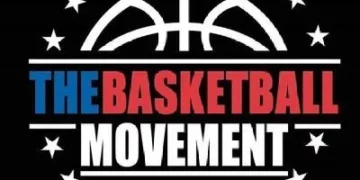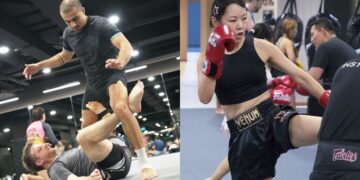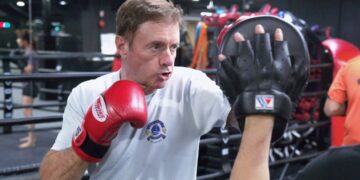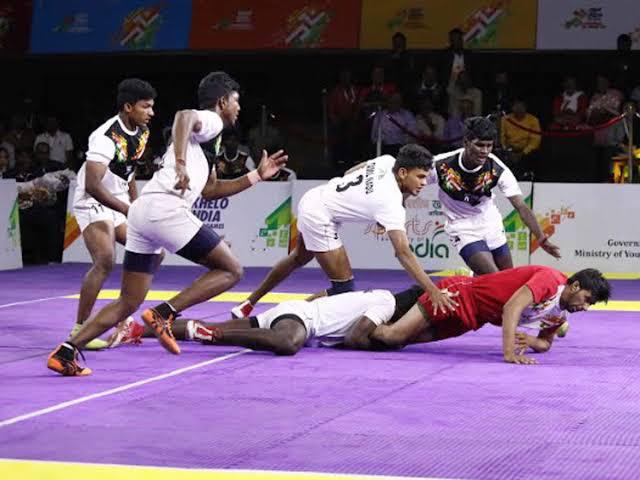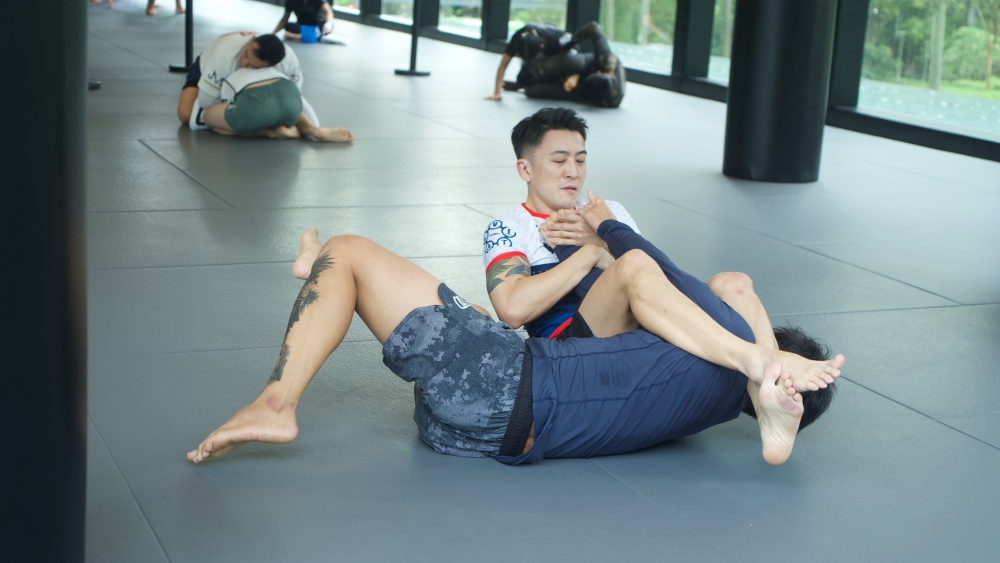
Brazilian Jiu-Jitsu has earned tremendous respect within the martial arts community for its effectiveness in one-on-one combat, particularly in the context of mixed martial arts. Many of the world’s top MMA champions have a BJJ base and proudly display their skills in controlling and submitting highly dangerous opponents. However, a frequently debated question remains: How effective is Jiu-Jitsu when applied in real-world self-defense situations, particularly on the streets? Today, we will explore this question and discuss the value of BJJ as an effective means to stay safe.
The Basic Principles Of Brazilian Jiu-Jitsu
Brazilian Jiu-Jitsu focuses on ground fighting and submission grappling, with the fundamental principle that a smaller, weaker person can successfully defend against a bigger, stronger assailant by using leverage and proper technique. This principle has been ingrained in the martial art since its inception, as the Gracie brothers, the fathers of BJJ, are known for their unassuming stature. The art emphasizes positions of control that can lead to submissions, such as joint locks or chokeholds. These foundational aspects are particularly advantageous in a one-on-one scenario where the goal is to neutralize the threat without causing unnecessary harm to either party involved.
Focus On Leverage And Control
The essence of BJJ is evident in its practical use of leverage, balance, and body mechanics. Practitioners learn to control an opponent by taking the fight to the ground and applying techniques that force the assailant into submission. While you cannot guarantee a submission at all times, the fact that the opponent is on the ground ensures that the BJJ practitioner stays within their specialty zone. This ground-based focus is designed to nullify the advantages of size and strength, making it highly effective against larger attackers, which is a common scenario in street fights.
Close-Quarters Combat
Another advantage of Brazilian Jiu-Jitsu is its emphasis on close-quarters combat. Street altercations often occur in tight spaces, where the ability to control an opponent without the need for striking can be a significant advantage. BJJ training provides a complete approach to handling such close encounters, focusing on controlling the opponent through grips and body positioning. Also, there is an element of Judo (and wrestling) in BJJ. This means that throws and takedowns are also viable options to end an altercation.
Points Of Consideration
One of the primary limitations of BJJ in street fights is its focus on single-combatant engagements. Most BJJ techniques require a commitment to controlling one opponent, often on the ground. This can be a significant drawback in situations where multiple attackers are involved. Going to the ground in a multi-assailant attack can expose one to additional threats from other individuals, which is less of a concern in a controlled sports environment.
Street fights are unpredictable and lack the rules and etiquette found in a BJJ gym. Practitioners must adapt their techniques to cope with variables such as uneven terrain, the presence of weapons, and the unpredictability of civilian clothing. Moreover, situational awareness becomes crucial in these environments. A BJJ practitioner must be able to quickly assess whether engaging in a physical altercation is the safest and most effective response.
Self-Defense And Escalation
BJJ can be highly effective in self-defense situations, particularly in defending oneself or others from an aggressive assailant. The art teaches control without necessarily inflicting severe harm. Submissions can neutralize a threat, allowing for de-escalation or escape. However, the effectiveness of these techniques must always be weighed against the potential for escalating violence in unpredictable street scenarios.
To gauge the effectiveness of Jiu-Jitsu in street fights, it’s crucial to consider several practical aspects that differentiate a street scenario from a sporting contest.
For BJJ practitioners interested in optimizing their skills for street effectiveness, specific adaptations and considerations should be included in their training regimen. One critical mistake people make is that they think of street fights like a BJJ match. This is honestly a big mistake in many cases. Remember that the sporting side of BJJ runs under the premise that strikes are not allowed. This means that sport BJJ has evolved into a style that allows space or removes essential grips from the opponent’s hands. If one does this in a self-defense context, then strikes to the head and body are pretty much a guarantee. It is a smart idea to place a lot of emphasis on clinch work and fundamental techniques when it comes to street altercations. This is the very heart of Brazilian Jiu-Jitsu and is still effective even in today’s environment.
Incorporating scenario-based training can prepare students for the high-stress conditions of a real altercation. This includes practicing in non-traditional environments, wearing everyday clothing, and training against attacks that start from standing positions or involve weapons.
Another point to consider is this: To address the limitations of BJJ in multi-attacker scenarios or against armed opponents, it is best that practitioners cross-train in other martial arts. Other disciplines which deal explicitly with multiple attackers and weapon defense, or striking arts like Muay Thai and Boxing, can complement BJJ’s grappling focus, creating a more well-rounded self-defense capability.
Conclusion
Brazilian Jiu-Jitsu is undeniably effective in one-on-one combat situations and provides a solid foundation for self-defense. BJJ emphasizes control, leverage, and technique over brute strength – these are valuable skills for dealing with dangerous situations on the street. While it offers significant advantages in terms of managing close-quarters confrontations and controlling an attacker, practitioners must be aware of its limitations, particularly when dealing with multiple attackers or armed opponents.
The true measure of its effectiveness on the streets comes down to the practitioner’s ability to adapt the principles of Jiu-Jitsu to the chaotic and unpredictable nature of real-world violence. Proper training, situational awareness, and perhaps cross-training in other martial arts are essential for those looking to use Brazilian Jiu-Jitsu effectively outside the dojo. While BJJ is a powerful tool in the self-defense context, like any tool, its effectiveness is ultimately determined by the skill and judgment of the user.
Learn BJJ For Self-Defense Today!
If you are looking for a sign to learn some self-defense today, this may be your cue! Head down to Evolve MMA for our free complimentary trial classes and you will get to learn from our World Champions how these self-defense moves are used.
Book your complimentary trial class with our World Champions below!
If you have any other questions regarding Evolve MMA and the programs we offer, you can get in touch with our membership executives at the following locations:
Evolve MMA (Far East Square)
26 China Street
Far East Square #01-01
Singapore 049568
Phone: Evolve MMA (Orchard Central)
181 Orchard Road
#06-01 Orchard Central
Singapore 238896
Phone: Evolve MMA (KINEX)
11 Tanjong Katong Road
#02-52 KINEX
Singapore 437157
Phone: Evolve MMA (Star Vista)
1 Vista Exchange Green
#02-26A The Star Vista
Singapore 138617
Phone: (65) 6539 9590
BJJ’s popularity has increased exponentially in the past three decades thanks to the growth of mixed martial arts. It’s a fun martial art to train regardless of your fitness level, and it’s an effective self-defence…
Brazilian Jiu-Jitsu is one of the most rewarding martial arts you can learn and it’s one of the newest. It is widely viewed as the best martial art for one-on-one combat against untrained opponents with…
Have you ever wondered why so many people get hooked on Brazilian Jiu-Jitsu? There are plenty of reasons why people who train Brazilian Jiu-Jitsu keep coming back. The martial art continues to evolve and is…
Good posture comes with its share of perks like helping you make a better first impression when you meet new people. Good posture gives you an air of authority and makes you appear taller than…
Brazilian Jiu-Jitsu (BJJ) is widely viewed as one of the best martial art to learn for self-defense for various reasons, like allowing smaller fighters to use leverage to defeat larger opponents. BJJ is a derivative…
You’ve seen it on television, featured in mixed martial arts events, or completely on its own. Brazilian Jiu-Jitsu (BJJ) is one of the most popular sports on the planet, and subsequently, one of the most…
Choosing a new hobby can be an exciting and rewarding experience. Whether you’re looking to learn a new skill, learn martial arts, meet new people, or simply have fun, there are many hobbies to choose…
Standup grappling is an integral part of the overall skill set needed to be successful in MMA. Regardless of your individual style, you need a base proficiency in standup grappling to enforce your game plan…
Muay Thai is a combat sport that blends grace, power, and accuracy. While the sport itself is deeply rooted in tradition and discipline, the modern fighter must possess a combination of physical and mental attributes…
Brazilian Jiu-Jitsu is a martial art that has been rapidly growing over the years. It is one of the few major martial arts in the world where techniques are still improving and will surely continue…
People sign up for boxing training for various reasons, like learning how to defend themselves, getting into better shape, or searching for a productive way to release steam. However, learning to box provides many benefits…
The blast takedown is a highly effective way to wrestle anyone to the ground. It’s an old wrestling technique that has carried over into mixed martial arts (MMA). It’s a power takedown that involves wrapping…





